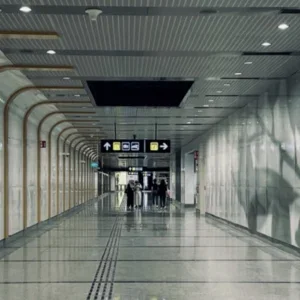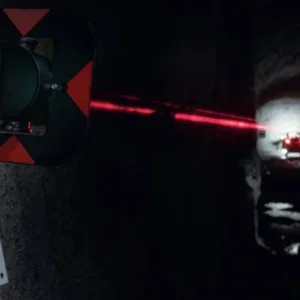Morgan Sindall’s precast factory at Ridham Dock near Sittingborne in Kent, UK, was set up 10 years ago to support Morgan Sindall’s tunneling business unit and supply segments to the Heathrow Terminal Five project. It was sited at Ridham, not only to be close to the tunnelling work on that project, but also due to its proximity to London for future work.
As well as Heathrow, the plant has since supplied a variety of Morgan Sindall’s other projects including Croydon Cable Tunnel, Belfast Sewers Project, Hendon to Colindale Cable Tunnel and the Brixton to Honor Oak water tunnel (part of Thames Water’s London Ring Main extension).
Ridham Precast has also supplied the Brighton and Hove ‘Cleaner Seas for Sussex’ sewer project.
Lee Tunnel
Ridham Precast is currently supplying the segments for the Lee Tunnel, part of Thames Water’s London Tideway Improvements programme. Awarded to MVB, a joint venture consisting of Morgan Sindall, Vinci Construction Grands Projets and Bachy Soletanche, the 7.8m internal diameter, four mile (6.4km) long tunnel utilises a tapered universal ring design comprising seven segments plus a key.
Production fired up in March 2011 after trials in February. One of the two carousels at Ridham is dedicated to manufacturing segments for Lee Tunnel, and will take 2.5 years to fabricate the segments required. The other carousel is currently idle, ready to supply other projects.
Factory operation
Dave Hicks, engineering manager at Ridham Precast, says that the high turnover speed achieved with a carousel system makes it a far superior method to static moulds. Though this is with a higher startup investment. Martin Hill, production and works manager, adds: “This translates into a more efficient means of manufacture, with more production per mould. With static casting, when concrete is moved over greater distances, quality can suffer. With our process it is typically less than five minutes between concrete production and placement.”
“This development is so much more advanced, yet many of our competitors have stuck with static moulds.”
The plant uses an onsite batching plant. “You will never get sufficient quality with a batch ready mix,” says Hill, “you need to batch on site.” Ridham Precast uses a Skako Denmark supplied batching plant which has been designed for steel fibre reinforced concrete production.
“Overwhelmingly we produce steel fibre reinforced concrete often with the addition of polypropylene fibres. The steel fibres come collated as glued strips from Bekaert. This is key to good fibre distribution in the concrete as loose fibres tend to ball.”
Hicks continues, “How the steel is put into the mix is key. We have worked with Skako to absolutely eliminate balling. It’s all about a combination of the timing of conveyor belts, premixing and how the belts move. If you get everything right, you get a very good distribution of fibres.
Mick Town, Ridham’s precast manager, points out that “this is a highly modern plant. In older ones the fibres were introduced later in the process, resulting in an inferior distribution through the mix. When a Lee Tunnel inspector examined a segment we cracked open, he reported a ‘better than expected’ fibre distribution.”
The fibre hopper feeds 30kg per m3 of Bekaert Dramix steel fibres into the process via a combination of vibrating feeders, weigh hoppers and conveyors. The steel fibres are added to the aggregate weigh belt after the aggregate has proportioned. The timing and action of the discharge of the aggregate belt premixes the steel fibres with the aggregate. This helps good fibre distribution and prevents bridging as the fibres are fed into the mixer. The capacity of the plant is tactically reduced from 2m3 to 1.5m3 with the steel fibres as one of the measures to prevent balling. Polypropylene fibres of 32 micron thickness are added to prevent spalling of the concrete in a fire. These are cut on demand from a fibre tow and fed directly into the mixer. Mix time is four minutes with about 30 seconds for weighing up. The batching process works in parallel so while one batch is mixing, the next is being weighed. A bucket conveyor delivers the mix to a waiting casting hopper at the production line. The whole process is fully automated.
The moulds use electric vibrators to compact the concrete and research has been undertaken to find the optimum vibration. Hicks recalls a problem five years previously with stiff moulds: “CBE, who manufacture our moulds, now employ a vibration analysis specialist to ratify all their mould designs.”
There are nine production stations on the production line, with the 40 moulds moving between them on the carousel. Each has approximately 10 minutes to complete its tasks before the carousel moves on, but only once each station has signalled its readiness to continue. The control system is interlocked until all consents have been obtained. A lamp is illuminated for each station on a display board as they declare themselves ready so that the line charge hand can see the location of any delays.
One concern with the carousel system is that the movement of the pallet is enough to refluidise the concrete, so a lid is closed tightly on top of the poured concrete to ensure the correct form is maintained.
Although he describes it as a highly automated factory, Hicks tells T&TI that, while it might be new to segment manufacture, the technology in use at the plant was already established in other industries when he brought it in 10 years previously. “In many cases, fresh blood can invigorate an industry, new ideas can be brought in that are obvious to an outsider but revolutionary to the established way of doing things.”
Glueless gaskets and steel moulds
The gaskets are provided by PDT Profiles (formerly Phoenix Dichtungstechnik) and are physically cast into the concrete, which is a recent development. “Conventionally,” says Town, “you would cast grooves into the concrete and apply the gasket with an adhesive. This process is dirty, smells and is generally unpleasant for the workers. Now that we no longer use glues and chemicals, that is not a problem. The quality is also second to none, the segments are visibly much better than glued gasket ones, and it means that you can store them outside without the environment affecting the adhesive. We had a backup system in case there were unforeseen problems – we could still glue gaskets on, but it has not been needed.”
Before concrete is poured into the moulds, gaskets are fitted by hand to a rebate around the sides of the mould. They are then hammered in firmly by a rubber mallet, concrete is poured, and the gasket is firmly embedded in the segment as it cures. T&TI is told that it is possible and simple to remove the gaskets if necessary, but they are secure enough that they will not come loose by accident.
Town adds, “We are the first to use this system in the UK. It was used on a very small scale in Moscow on a sewer tunnel. Our use here is a major step up for the system. All it took was someone to shake things up by actually having the courage to do this.”
Town says that their preferred mould supplier, the French company CBE, already had a relationship with PDT so it was just a question of asking them to come up with a scheme for casting gaskets into the segments. Town says, “We’ve had zero problems. It ticks all the boxes. The gaskets are a little bit more expensive but you don’t need to buy the glues or invest in the cleaning materials.
“You do need decent moulds and other factories might struggle if they relied on concrete or poly moulds. Steel moulds are necessary to meet the kind of tolerancesspecified for the Lee Tunnel project. We are down to parts of a millimetre accuracy.”
Heat
The JV requires the plant to prove the demould strength of segments, says Town.
“To do this we embed thermocouples and looked at the temperature over time of the curing process. Using software supplied by OTB Concrete, this gives us the concrete strengths so that we know when we can lift and when we can’t.”
“We’ve never had any thermal cracking, but we need to be able to prove that we will not. It also enables us to optimise curing, reducing the energy use but maintaining the strength.” Segments spend five and a half to six hours in the moulds.
De-moulding and storage
Vacuum lifters strip the segment from the mould where it is inspected. It is then turned vertically and picked up with lifting anchors. The segment is stored on its edge to save space and to protect it from damage. Close to zero damage has been seen at the site so far but if a segment is rejected, it will be crushed and recycled. A local recycling company would sell the material as sub base.
Only 39 segments had been rejected when T&TI visited the site out of 3,600 total, including deliberate segment breaks for testing and trial segments used for ring builds.
The Ridham site can store around half of the segments required for the Lee Tunnel project, which is approximately 2,000 rings. A supply buffer of three months’ worth of rings ahead of advance rate expectations is usually required.
Getting the picture
Nod Clarke-Hackston, VMT sales manager tells T&TI, “The use of a 3D laser checking apparatus was included in the tender documents for the Lee tunnel project. The Ridham plant had been successfully producing high quality segments for the past 10 years without such a system, but as it was required in the specification it was purchased and is now being used every day to check the dimensional accuracy of the one in 50 segments that the contract calls for.
“Although the dimensional tolerances required for the project are specified in the tender it only gives the dimensions and not the conditions under which these should be achieved. No temperature is specified or a time in the aging of the concrete. All the measurements taken are temperature corrected as is necessary in any precision metrology. But the reference temperature against which the comparison is made is not. Similarly it would be better to do the dimensional checks when the segments have reached optimum maturity at 28 days.
This however would lead to a potentially large amount of incorrect segments being produced prior to checking so a compromise of checking the dimensions after de-moulding is taken.
“During the initial training of the Ridham team by the VMT engineer a check on the moulds was carried out and it was here where they discovered there was some torsion in a few of the moulds. This would not have been possible with the traditional way of checking, but once identified it was a straightforward task to rectify.
A unique identity is given to concrete in each mould and segments have a barcode sticker applied to them when de-moulded. Segments histories are stored in the factory database in case information is required in the future. T&TI is told that this is not an industry norm, and segment identities scratched on in crayon are not unheard of.
For the Ridham plant the system includes a Faro lasertracker although similar instruments from Leica and API have been supplied in VMT’s systems. The lasertracker follows the movement of a precision retro reflective prism encased in a hardened stainless steel housing that the operator moves across the faces of the mould or segment. The instrument records the coordinates of the measured points (typically several thousand per face) across the segment.
From this a 3D image is built up of the structure with a software package called Spatial Analyzer, produced by US-based New River Kinematics and distributed by VMT in Europe.
A VMT software package called TubGeo gives a comparison between the measured object and the original CAD drawing of the segment. If a problem is seen to develop, you can then check the mould. The kit cost Ridham Precast approximately EUR 220,000 (USD 300,000).
Fitting cast in gasket to segment mould eliminates the need for unpleasant adhesives The finished product is a neatly fitted gasket with no staining. It is fitted tightly enough that it will not fall out but can be removed at will Finishing the extrados face of a segment in the mould Batching plant material loading belt carrying aggregate and fibres







